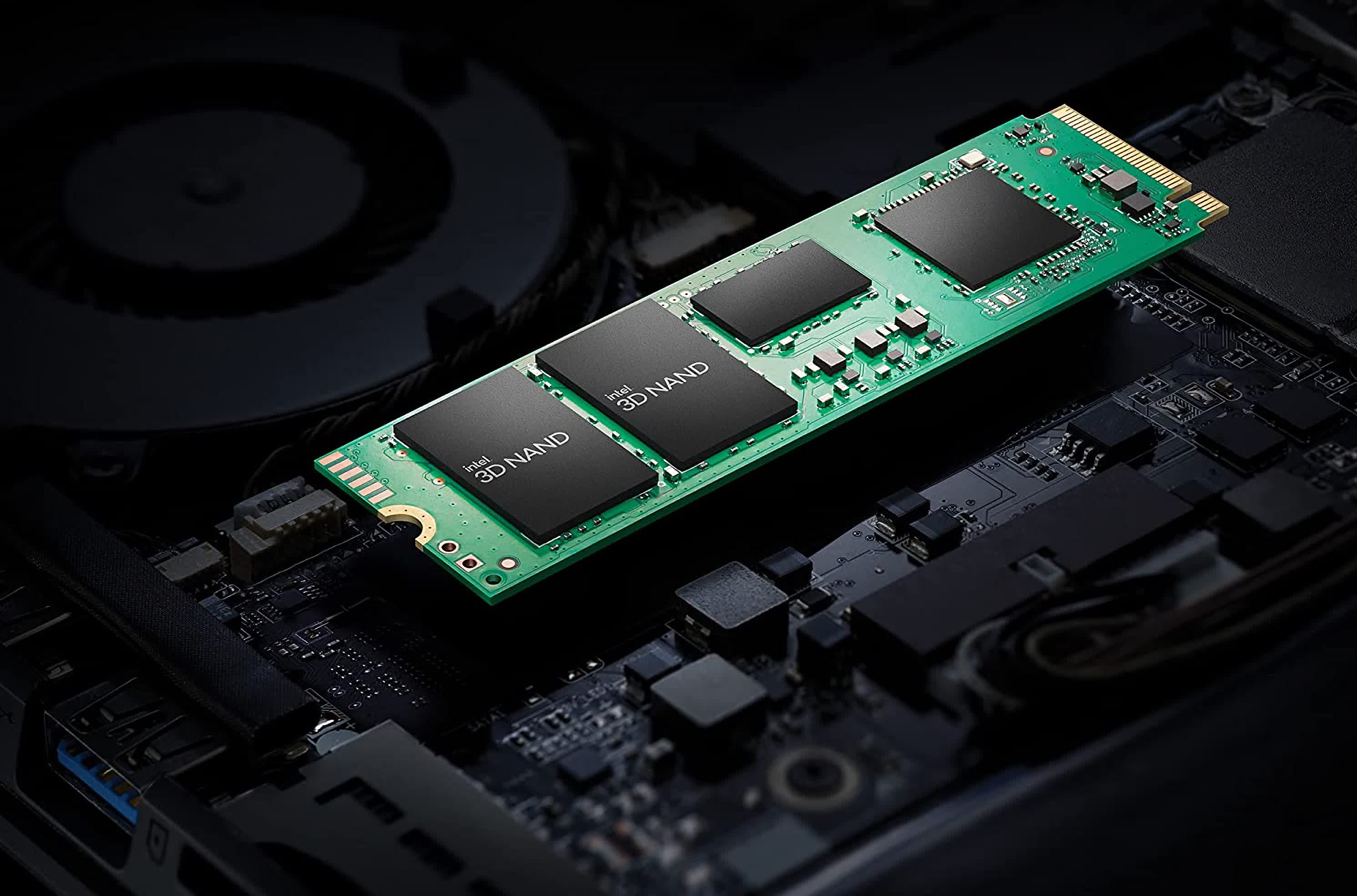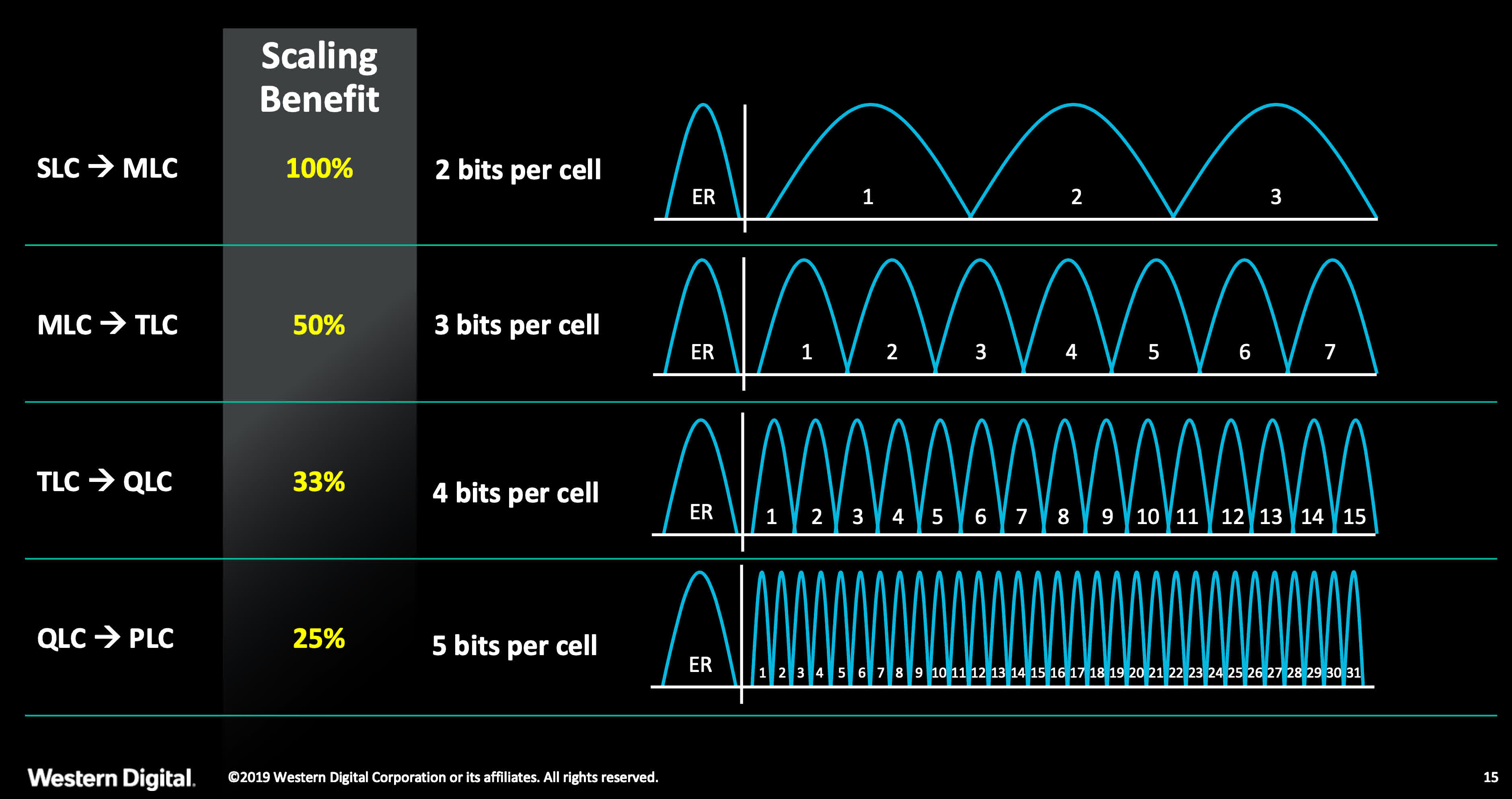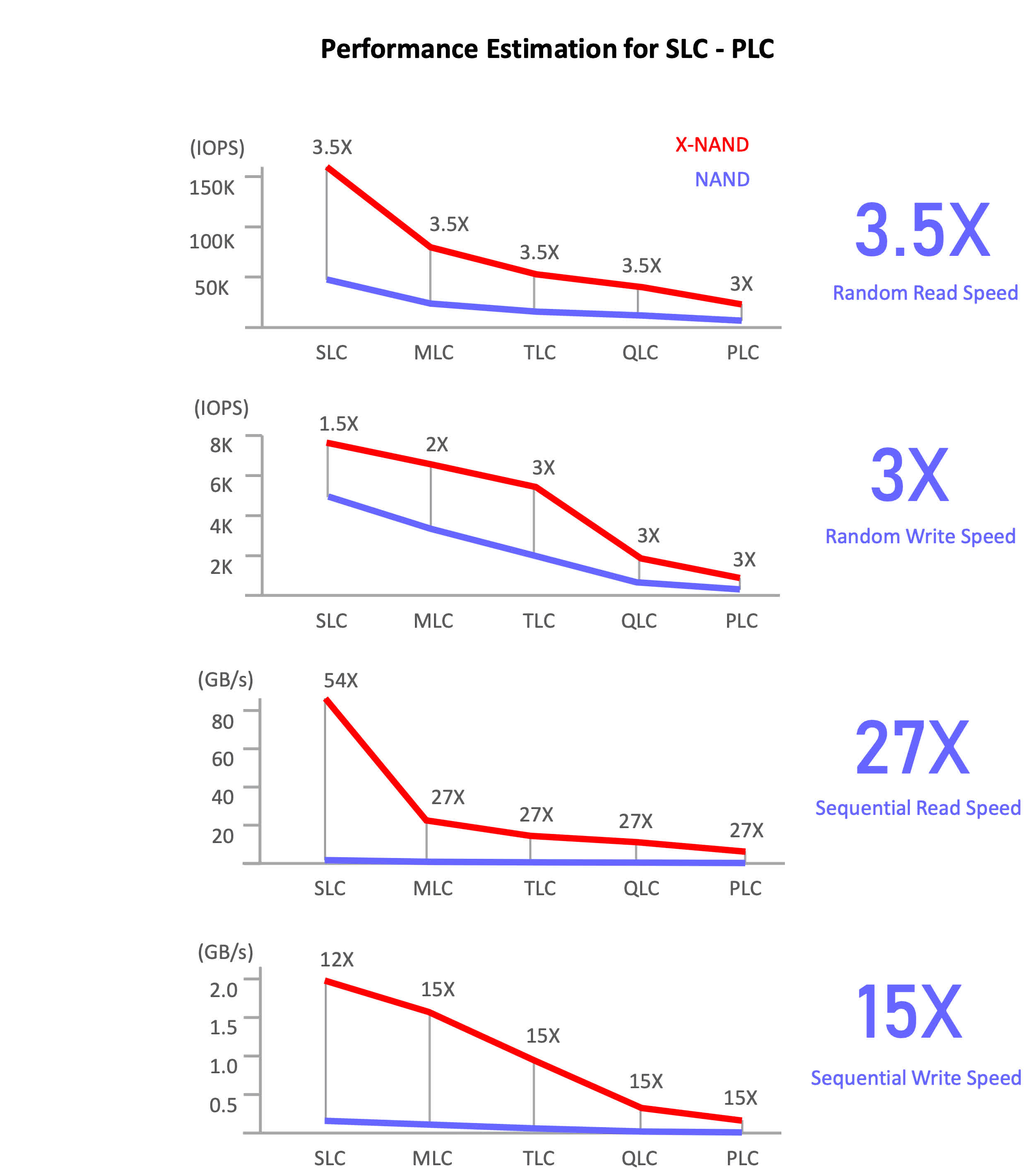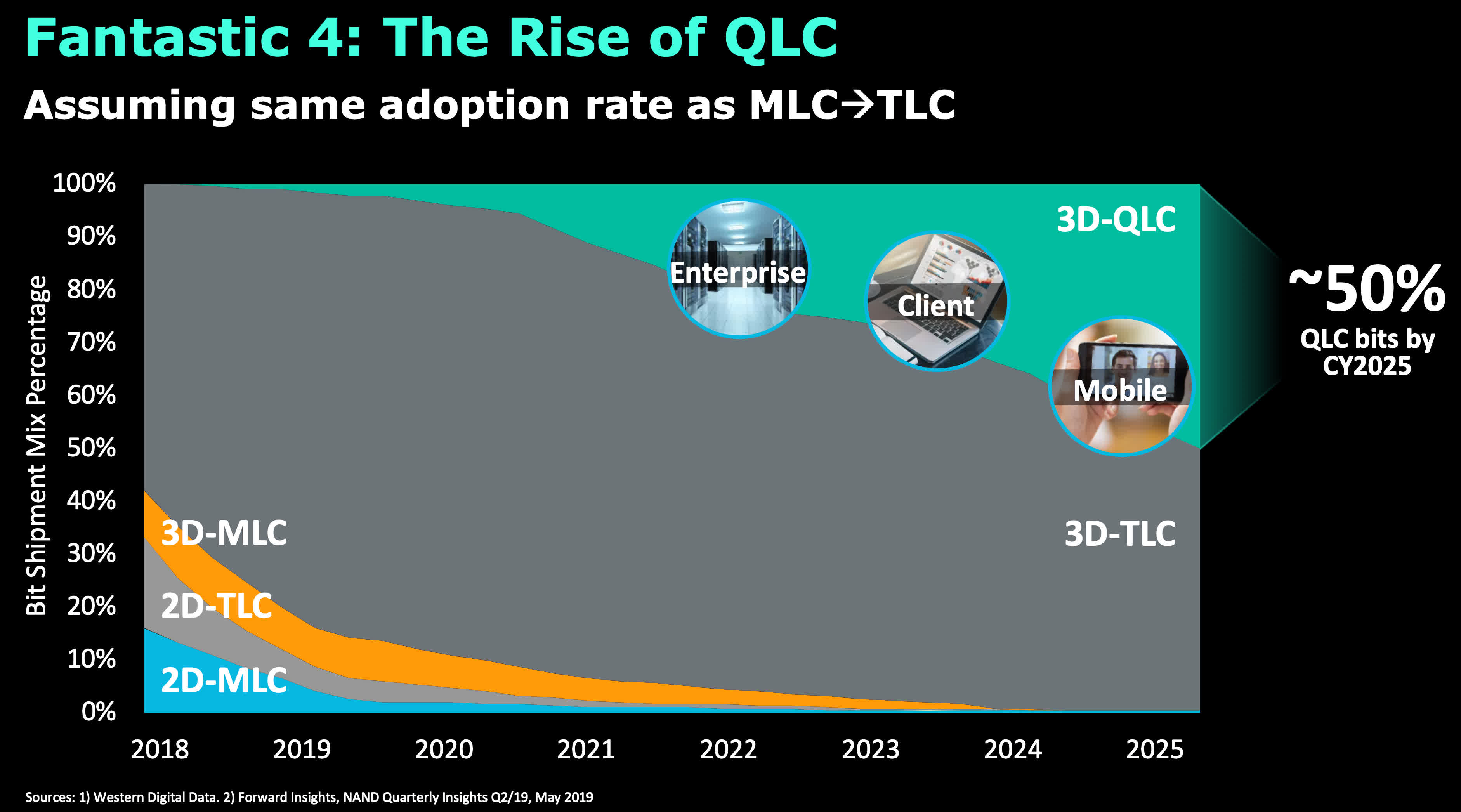Something to look forward to: When we look at how SSDs have evolved over the last decade or so, it's hard not to appreciate just how fast and affordable they've become. That process is still ongoing though and with a new technology dubbed "X-NAND," solid state storage could get faster than ever before.

A decade or so ago you could find a 32GB SSD for around $500, and a 64GB drive for $1,100, but today you can find fast 1TB or even larger drives for less than $150. This evolution has taken years of R&D efforts, flash storage manufacturers cramming more bits of data into every memory cell, and fitting as many of these cells as possible onto a NAND chip.
The first consumer SSDs were single-level cell (SLC) drives meaning they could store 1 bit of data per cell, but typical consumer drives today integrate triple-level cells (TLC) and quad-level (QLC) cells, which means they can store 3 bits and 4 bits per cell, respectively. There's even 5-bit PLC NAND in the works, but that won't be here for a while -- 2025 at the earliest.

Most of our readers may already know that SLC NAND offers faster write speeds and higher endurance, but can get quite expensive, while TLC and QLC NAND are a more cost-effective way to build high-capacity drives. On the flip side, TLC and QLC NAND is comparatively slower, which is why manufacturers have had to employ various tricks (DRAM and SLC caches) to achieve good read and write performance, as well as acceptable endurance levels for typical usage in a personal, education, or business environment.
There is a company that claims to have a solution to this problem in the form of X-NAND. The technology was first announced at last year's Flash Memory Summit, but it flew under the radar until this month, when two patents for it were officially approved.

X-NAND is a different approach to NAND memory design and the work of Neo Semiconductor, a company founded in 2012 by Andy Hsu and Ray Tsay. Simply put, the aim of X-NAND is to offer the performance benefits of SLC NAND and the storage density of multi-level cell (MLC) NAND in a single package.
When compared to conventional multi-level cell designs, X-NAND reduces the flash die's buffer size by 94 percent, which would allow manufacturers to increase plane count from 2-4 to anywhere between 16 and 64 planes per die. This allows for greater parallelization of reads and writes on a NAND die and, in turn, could lead to increased performance even for SLC NAND.
Compared to QLC, X-NAND would -- at least in theory -- allow for 27 times faster sequential reads, 15 times faster sequential writes, and 3 times the random read/write speed of the former technology. At the same time, the new technology results in a smaller NAND die with lower power needs, which would keep manufacturing costs the same as with QLC. Endurance is a more complicated story, although the company says TLC and QLC could see an improvement.

It's worth noting these are performance estimates, so we're only looking at potential improvements to conventional NAND designs. Still, with TLC and QLC SSDs set to become the most adopted flash storage technologies across enterprise, desktop, and mobile markets, it's nice to see companies coming up with solutions for TLC and QLC's biggest challenges, which are write performance and endurance.
Neo Semiconductor is currently looking to forge partnerships with NAND manufacturers like Samsung, Intel, Micron, Kioxia, Western Digital, and SK Hynix to implement its IP in their designs, which includes 22 patents as of writing. If you're interested in a deep-dive into X-NAND, you can find one here.
https://www.techspot.com/news/90719-x-nand-promises-qlc-memory-works-slc-speeds.html